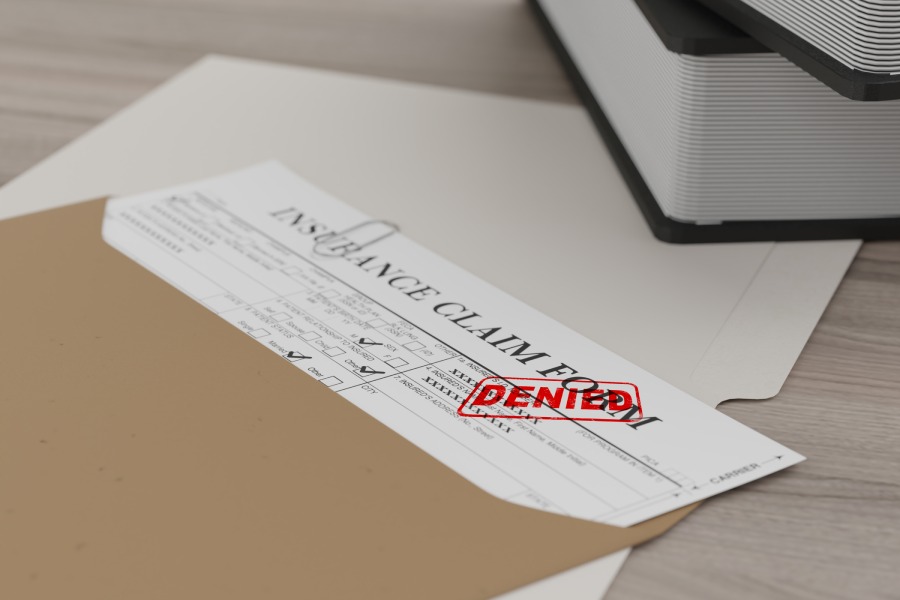The mediator’s role is crucial for many processes in different industries. In healthcare and medical billing, clearinghouses act as medical intermediaries between the medical provider and the payer. But what is a clearinghouse in medical billing exactly, and why are they important?
Although using a clearinghouse in medical billing is not mandatory, there are many advantages that all subjects involved in the medical billing process can benefit from, especially healthcare providers. As expert medical billers, we will reveal what clearinghouses do and how they can improve your revenue cycle management.
Understanding Clearinghouses
Healthcare clearinghouses act as intermediaries between healthcare providers and health plans or other responsible payers. Their services focus on one crucial step of the claim submission process: data scrubbing.
Simply put, clearinghouses in medical billing are responsible for quality control. They ensure that all the information in the claim is accurate before it is submitted to the payor. Common things clearinghouses proof are duplicate or incorrect codes, inaccurate patient data, inconsistent data elements, incorrect payer ID, etc.
All in all, clearinghouses are crucial for minimizing denied claims. Since they process electronic transactions, clearinghouses are HIPAA-covered entities and are obligated to keep all the data secure.
Depending on their expertise, clearinghouses can work with different types of claims. They are the following:
- Medical claims
- Pharmacy claims
- Dental claims
- DME claims
- Patient facility claims
- Out-patient medical professional claims, etc.

Source: freepik.com
Benefits and limitations of clearinghouses
Submitting electronic claims through a clearinghouse offers numerous benefits. These include:
- Timely claim error detection, which might reduce the number of denied claims.
- Fast claims processing and reduced reimbursement times.
- Batch claim submitting instead of individual submission.
- Lower rates of human errors.
- Management of the electronic claims from one location.
- Improved relationships with insurance carriers.
- Simplified claims processing with around-the-clock support.
- Reduced administrative burden.
Conversely, there are also certain downsides to collaborating with a clearinghouse. One of the downsides might be that their services cost money, and for some healthcare providers, it might not be a cost-effective solution.
How Clearinghouses Work?
Clearinghouses play an important role in the healthcare revenue cycle management process. Understanding how they work can help you better understand what a clearinghouse is in medical billing.
Your in-house medical billing team, or us, as your medical billing assistants, create an electronic claim using specialized software. The electronic file is called ANSI-X12 837. The electronic file is then sent to the clearinghouse using medical billing software.
When the clearinghouse receives the electronic medical claim, it starts the scrubbing process. The entire medical claim is checked for errors, such as inaccurate data, upcoding, coding errors, needed documentation, etc.
The clearinghouse can either find an error with the claim or approve it. If the medical claim has no errors, the clearinghouse continues by transmitting it securely to the payer.
On the other hand, if the clearinghouse detects some kind of error in the medical claim, they won’t process the claim, and you’ll end up with a rejection. The report will contain all the issues that the clearinghouse found with the claim. Then, the next step would be to correct those errors so the claim can be successfully resubmitted.
How to Know if You Need a Clearinghouse?
Partnering with a clearinghouse is not compulsory. It is entirely up to your organization’s management team whether they will decide to utilize the benefits the clearinghouses offer or not.
Since clearinghouses charge monthly fees ranging between $75 and $95 per provider, you can decide whether it is necessary for your organization to hire. You can do it by answering the following questions:
- Do you process and submit your claims electronically?
- Is your medical billing staff experienced with electronic transactions?
- How big is your claim volume?
- Will a clearinghouse shorten your average reimbursement times and reduce medical claim errors?
For instance, if you hire our CLICKVISION team to handle the entire revenue cycle management process for you, you will have access to an experienced team that will optimize your revenue. Our team understands the complexities of the process, streamlining the process and ensuring accurate billing.

Source: shutterstock.com/ Photo Contributor: G_stocker
Integration With Practice Management Systems
Practice Management Systems, or PMS in short, are specialized software that assists healthcare providers with billing and other administrative tasks. Most of the software that clearinghouses use will allow seamless integration with PMS.
Once you integrate your chosen clearinghouse with your practice management system, you will benefit from smooth-running billing workflows and improve their efficiency. The integration process is assisted by specialized personnel from both sides, the clearinghouse and the billing software.
Security and Compliance Considerations
As a healthcare provider, one of your important tasks is to ensure adherence to the government and local laws and regulations. Staying compliant requires constant effort and keeping up with the latest changes.
HIPAA compliance is of significant importance for both healthcare providers and clearinghouses. All clearinghouses are obligated to implement appropriate safety measures so they can safely handle, transmit, and store all patient health information. Some of the most important considerations are:
- Utilizing data encryption
- Implementing access control
- Detailed disaster recovery and backup plan
- HIPAA compliance verification
Future Trends in Clearinghouse Technology
As technology advances, it can be used to improve the entire medical billing process. The two emerging trends for clearinghouses are utilizing cutting-edge technology like artificial intelligence and blockchain.
AI-powered clearinghouses are currently on the rise. With their capacity to automate the scrubbing process and the ability to use predictive analytics, AI clearinghouses can streamline medical billing and contribute to mitigating risks.
On the other hand, blockchain technology is more focused on improving billing accuracy and transparency. Blockchain technology allows safe patient billing, cost tracking and payments.

Source: freepik.com
Conclusion
What is a clearinghouse in medical billing? Understanding it is crucial for every healthcare provider. As said, it serves as an intermediary between healthcare providers and insurance payers, processing and managing claims.
If you have a large volume of electronically submitted claims, a clearinghouse might offer several benefits, the most important being minimized claim errors. They are as important for revenue cycle management as an experienced medical billing team.

With a strong background in the marketing industry and healthcare leadership roles, Filip is responsible for CLICKVISIONBPO’s sales strategies and onboarding new clients. With a passion for sharing insights gained from his experience, he also shares valuable knowledge through industry related articles.
